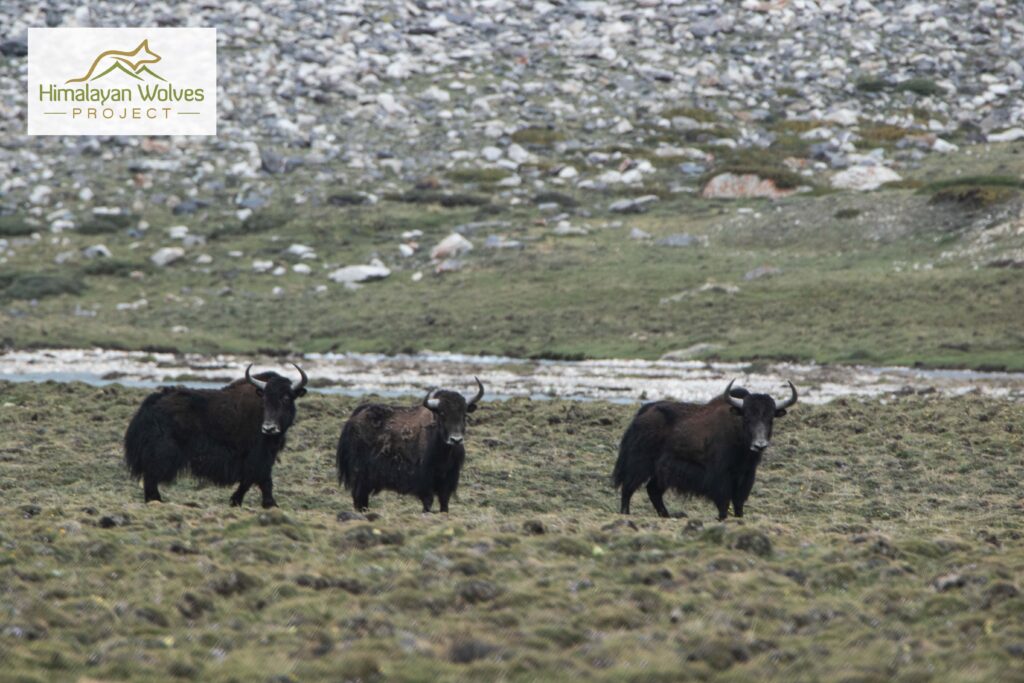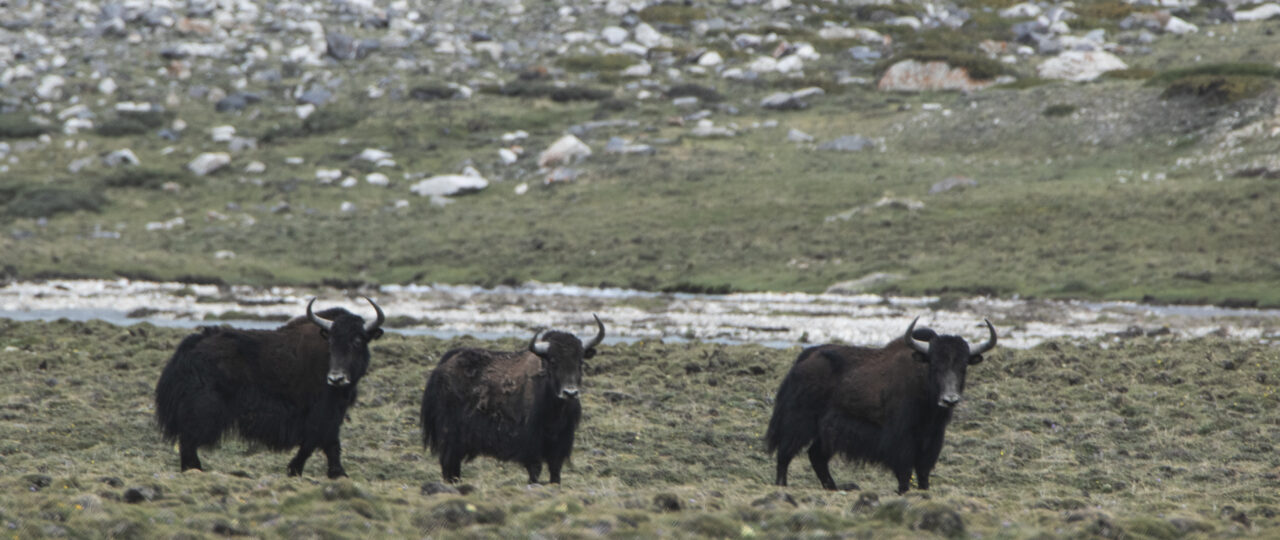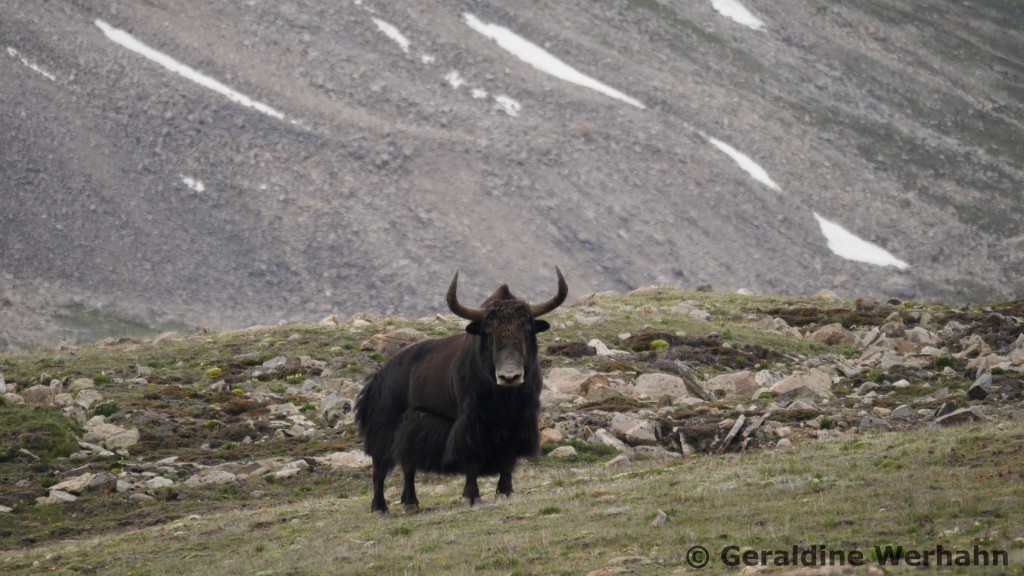The Wild Yaks of Upper Humla in Nepal
The Wild Yak population in upper Humla seems to benefit from less human pressure in their habitats in recent years. While in 2013 I did not see any wild yak there, we have seen two in 2014, one in 2015, three were seen in 2021 and three in 2022! This is a promising trend. But this population recovery is only in its early sensitive state and far from presenting a stable population in the area. The wild yaks in this region are part of the larger wild yak population across the border to the North where human pressure may vary. Wild yaks are sought after for their meat and for medicinal and cultural use of their body parts.
Wild yaks especially, but many of the wild herbivores, are in direct foraging competition with domestic yaks. Meaning the yummy green grasses and forbs are limited and whoever comes first serves first. When a herd of livestock moves up into a valley full of wildlife, most ungulate herbivores, but not the ever pleasant marmots, move out of the valley. But maybe the next valley is also busy with humans and livestock and so it goes. You get the challenge, space and intact habitats are limited but so critically important for wildlife.
Local people highly respect and admire the wild yak and it is a symbol of status across the Tibetan Plateau. Nevertheless, the wild ancestor of the domestic yak presents a nuisance to the herders of the domestics. Wild yak males are known to come and harass domestic herds in search of a female yak for mating. Sometimes the wild yak takes away with him the domestic female! This is just another example where the herders of the domestic type admire and respect the wild progenitor of their domestics, while also disliking it as a stronger and better adapted competitor.
The Red List by the International Union for the Conservation of Nature (IUCN) classifies the Wild Yak Bos mutus as vulnerable with a decreasing population trend. Conservation measures for the wild yaks in Nepal are strongly recommended. The wild yak individuals we observe in upper Humla are part of the population spanning across the Plateau to the north. These animals have expanded the populations range southward and our sightings of wild yaks over recent years presents a distribution update for the species. The animals may stay in the valleys of upper Humla seasonally or year-round. This may also vary from year to year with varying snow level, vegetation growth, and human pressure. This year some experts have suggested based on our photographs that of the three wild yaks we saw, one is a female with her young son plus another older/bigger male. The possible presence of a female wild yak is very exciting, as it is an indication for possible reproduction and not only the seasonal presence of male passers-by.
Large herbivores like the wild yak represent an important guild for the ecosystem. Through their coarse browsing they contribute to the heterogeneity in the vegetation allowing other smaller herbivores to coexist with them. Everything is connected. The more intact an ecosystems is, the more biodiverse and resilient to environmental fluctuations it remains. We are working to raise awareness around wild yak conservation in upper Humla from local to national level and aim to strengthen their legal protection!
Mongobay Interview with Naresh Kusi about the need to protect the wild yaks of Nepal.
TedTalk Protecting the last Living Wild Yaks of Nepal by Naresh Kusi

The three wild yaks seen in June 2022. Possibly a female far left with her young in the middle and a male on the right. Photo by Naresh Kusi.

